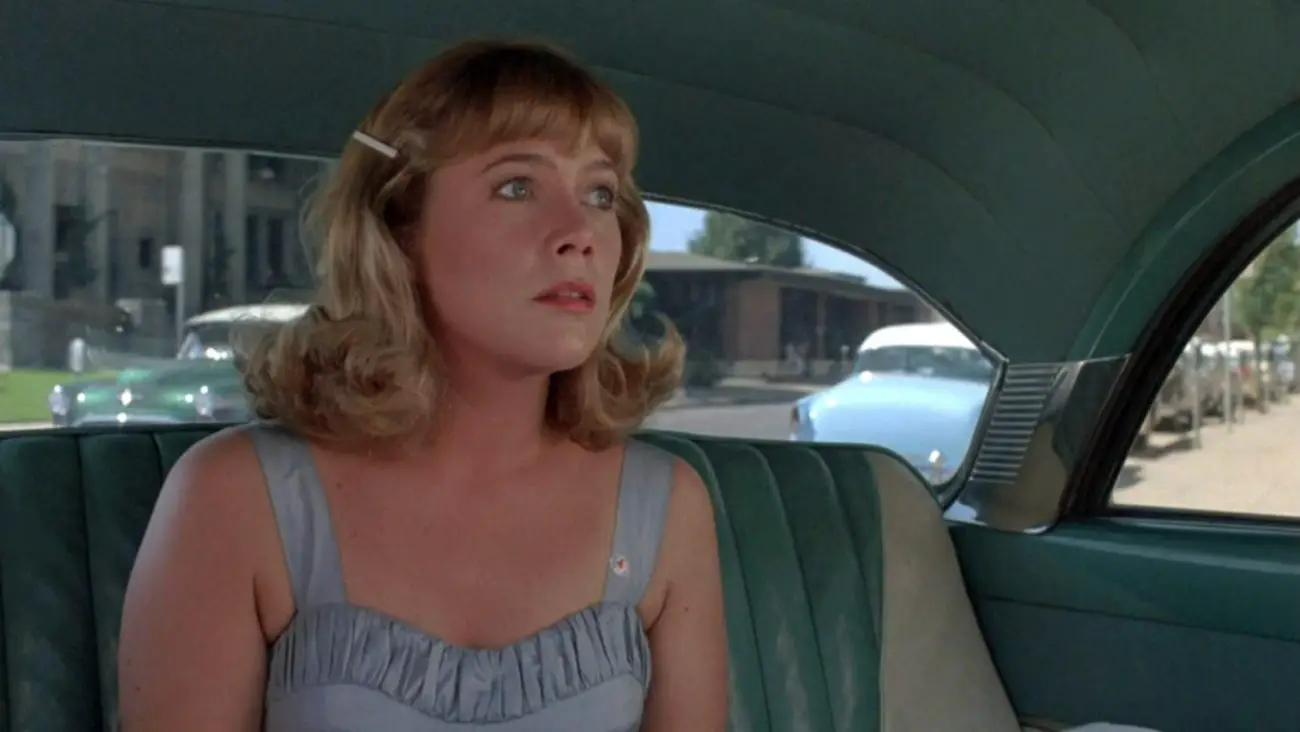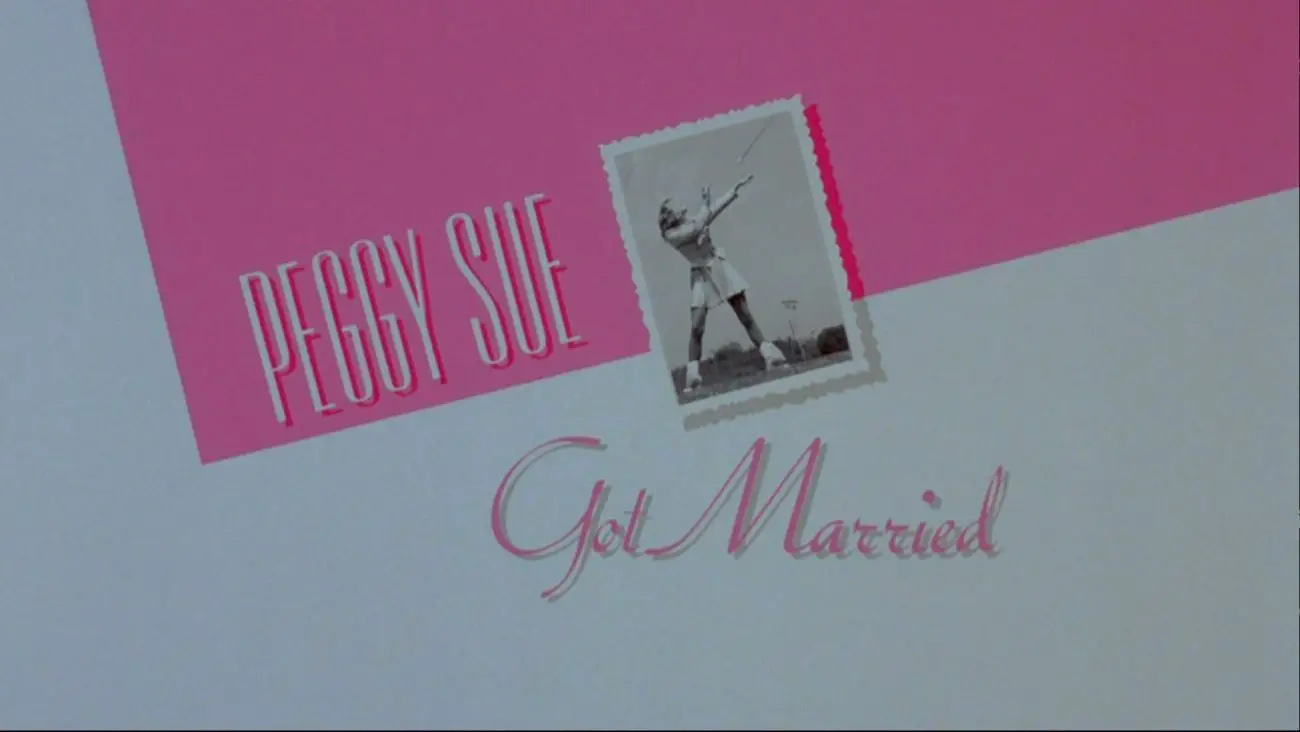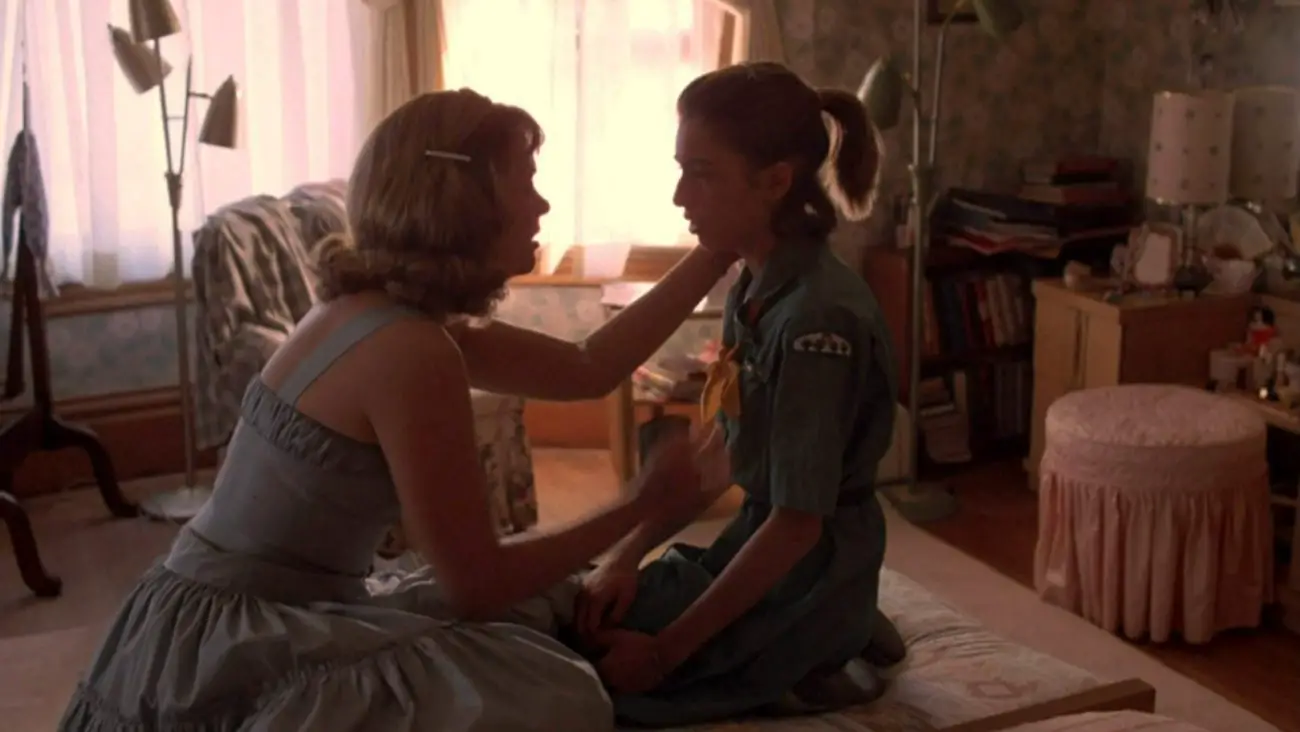The brilliant script for Patton. The triumph of The Godfather and its equally great sequel. The startup production company Zoetrope and its work with George Lucas and others. The groundbreaking The Conversation. The arduous production of Apocalypse Now. The winery. The famous daughter, eventually a celebrated director in her own right. One from the Heart. The boyhood films Rumble Fish and The Outsiders. The Cotton Club, other box-office failures, and financial distress. And later, the final, fatally flawed third Godfather picture and a long-delayed Megalopolis project.
This month at Film Obsessive, we’re celebrating and analyzing the work of Francis Ford Coppola, responsible for several of the greatest dramas of the New Hollywood era as well as a number of other provocative, challenging films. For a time in the 1980s he was also one of Hollywood’s most prolific filmmakers, knocking out seven films in seven years, among them one that might seem, on the surface, one of the least Coppola-esque of all his productions—and the one unambiguously critically and commercially successful of all of these—in Peggy Sue Got Married.

But Peggy Sue Got Married stands out among Coppola’s 1980s work not only because it resonated with audiences and critics alike, but also because it felt so tonally different from the director’s most celebrated work. Unlike the bleak, male-centric, and (nearly) humorless—and violent drama of The Godfather or Apocalypse Now, unlike the boyhood-focused Rumble Fish or The Outsiders, or even the solitary character study of The Conversation, Peggy Sue Got Married is a bright, female-centered, sprightly, warm-hearted, nonviolent, and charmingly comedic film, an anomaly in Coppola’s career but one that registers today as an affably heartwarming reflection on aging and maturity.
In 1986, Coppola was in the midst of the most prolific run of his career, but that proliferation hadn’t led to profit at the box office nor to the kinds of critical acclaim he’d become acclimated to in the prior decade. One from the Heart in particular was so disastrous—earning just over half a million dollars against its $26-million budget—it forced him to sell his beloved Zoetrope Studio. The low-budget (for him, at a reported $10 million each) teen dramas The Outsiders and Rumble Fish earned decent reviews, but the latter still failed to earn back its budget. The expensive Cotton Club was accorded a handful of noteworthy award nominations but made for a legitimate box-office bomb, earning back only about half of its lavish $47 million tab.
In this context, taking on the script for Peggy Sue Got Married seems an almost perversely odd choice. The 1980s were a decade in which most box-office successes trafficked in a realm of intense masculinity. Whether it was action (Raiders of the Lost Ark, Commando, Die Hard), sports (Major League, Rockys III & IV, Karate Kid), sci-fi (The Empire Strikes Back, Return of the Jedi, The Terminator, Predator), or war and military (First Blood, Platoon, Top Gun), the mainstream films of the 1980s were masculine tales of manly men in manly pursuits. It’s instructive that in this decade Alison Bechdel first composed the comic that would later comprise The Bechdel Test. Back then, it may first have been, as Bechdel later noted, nothing more than “a little lesbian joke in an alternative feminist newspaper,” but the idea would gain traction simply because so few films featured named female characters talking to each other about something other than a man. Needless to say, few of the above-named would pass even the first of its three modest conditions.
This is not to suggest that films featuring women as protagonists did not exist in the 1980s, as of course some did. But this was the decade before Thelma and Louise took to the road and the cover of Time Magazine. Of the top 50 box-office grossing films of the 1980s, only one—the James L Brooks maternal melodrama at #46 Terms of Endearment—placed women at the center of the film. I guess one could count Disney’s Little Mermaid if you wanted to be generous and ignore its protagonist’s retrograde desires for romance and marriage. The other candidates on the list were Fatal Attraction (attractive career woman is a crazed killing harpy bent on destroying marriage and boiling bunnies) and Tootsie (attractive career woman is Dustin Hoffman in drag). A handful of others were modest hits—9 to 5, Coal Miner’s Daughter, Flashdance—in other genres, but by and large, the 1980s was a decade of Rockys, Rambos, and Terminators ruling the box office.

Kathleen Turner was building herself in just a few short years a remarkable career in film. Following her incendiary debut in 1981’s Body Heat, where she channeled a Lauren Bacall-like sex appeal to lead dupe William Hurt to his demise—pretty much initiating the erotic thriller genre—Turner had made good box office with each of her films. There was the Steve Martin comedy The Man with Two Brains (1983) and then the two hit two romantic adventure comedies with Michael Douglas, Romancing the Stone (1984) and its sequel Jewel of the Nile (1985), but also between them the acclaimed Prizzi’s Honor. Peggy Sue Got Married would place Turner front and center in the difficult, titular role playing two versions of soon-to-be-divorced Peggy Sue Bodell, a woman who attends her 25-year high school reunion only to find herself transported back in time to her senior year in high school in 1960.
For a film featuring time travel, Peggy Sue Got Married is conspicuously devoid of special effects or editing trickery and instead adopts a an earnest, quiet, even subdued mise-en-scene. Watching today, it’s difficult not to speculate on how the de-aging CGI technologies put to use in the Marvel Cinematic Universe or Scorsese’s The Irishman might have looked in a film like this. But even for 1986 the film’s budget was relatively modest at $18 million. The makeup department’s work on Turner is excellent, with just the right amount of facial lines added to her 1985 self that make her 1960 self contrast with a more youthful glow. (The men, unfortunately, seem all to have fallen under a sudden cloudburst of talcum powder giving their older selves all the same greyed hair.)

Even the film’s title sequence suggests the film’s quiet, subtle, controlled confidence. Buddy Holly’s 1959 hit “Peggy Sue Got Married”—a rueful reverie over electric guitar and rhythm section, a sequel to his more raucous, lusty “Peggy Sue” of 1957—plays over the film’s titles, stylized in an ornate pink neon hue. The script, written by the husband-and-wife team Jerry Leichtling and Arlene Sarner, places Peggy Sue about to attend her reunion escorted by her daughter Beth (Helen Hunt). She and former high-school sweetheart Charlie (Nicolas Cage—more on him shortly), whom she married while pregnant just after graduation, are now separated due to his infidelities. But when an anxious, nervous Peggy Sue is named the reunion’s “queen”, she faints, overwhelmed, and wakes up to life in her senior year of high school, back in 1960.
From there, the film’s complications and conflicts are thoughtful and genuine. Did Peggy Sue make the right choice when devoting herself to Charlie and a lifetime of monogamy, parenthood, and domesticity? Did she overlook opportunities to connect with others (especially artsy runner-poet-heartthrob-loner-and-potential-polygamist Michael Fitzsimmons) and with her own desires? Did she learn anything useful in Algebra class? That last aside, those are life’s big questions. But Coppola’s approach to them in Peggy Sue Got Married is practically the inverse of his elsewhere: rather than imbue plot points with the elaborate, operatic grandeur of The Godfather or Apocalypse Now, here they are presented simply, with a detailed, plausible mise-en-scène and none of the Wagnerian theatrics seen elsewhere.
Perhaps it’s because Peggy Sue Got Married was a project Coppola hadn’t had a hand in developing, having replaced Penny Marshall, who was herself replacing Jonathan Demme. Or perhaps here Coppola simply intentionally subdued the more grandiose elements of his style in service of the story. Either way, the film becomes, as consequence, Turner’s, and while her performance in retrospect betrays some small affectation, but her Peggy Sue is confused, overwhelmed, sincere, intelligent, and mature, bringing a 40-year-old woman’s experience and knowledge to her high-school self’s emotional quandaries. As a consequence, a film that might to some feel slight—and one so unlike Coppola’s others and in an era dominated by phallocentric action—earns its existential weight with a warm, glowing, and humanistic approach.
And a humorous one at that. Although the film is often categorized as a comedy, I see it as an earnest, serious drama imbued with a gentle humor. Some of that humor comes from the mannered antics of Nicolas Cage as Charlie, Peggy Sue’s high-school sweetheart and later husband, a would-be singer with his own dashed dreams. He’s of course a bundle of his typical nervous tics and quirks, but his presence and problems are secondary to Peggy Sue’s, whose are more serious but no less comic. I love for instance, that she brings a lifetime’s experience to a front-seat makeout session with Charlie, replete with the language of love (“Doesn’t Lucky Chucky want to come out?”) and technique—freaking the young lad out! The film actually acknowledges that a mature woman might have sexual knowledge and desire without making her the butt of a joke or the object of pity.

If at the end Peggy Sue chooses the life she lived, mistakes and missteps along the way, the flawed marriage and the missed opportunities, it’s ultimately a comfort to the audience. We might have missed out on something but we forged real relationships with real people all along. We might have even inspired others, as Peggy Sue did Michael Fitzsimmons with a night of sex under the stars. It’s a conclusion that feels well warranted in light of the plot’s prior developments and allows Peggy Sue to make the same choices once again without the plot becoming a nightmare version of Groundhog Day. That ending is also deeply conservative in its endorsement of the bonds of marriage: Peggy Sue is expected to do all the emotional work of saving the Bodells’ marriage, while Charlie need only apologize for his infidelities. It’s not much more progressive than Tammy Wynette singing “Stand By Your Man” decades earlier.
Perhaps that conservativism resonated with audiences. The film’s gentle humor and human insight made it Coppola’s greatest success of the decade, and not only at the box office, where it took in a surprising $41.5 million against its $18 million budget, but also with critics and awards, appearing on Siskel and Ebert’s and many others’ best-of-year lists. Turner won the 1986 award for Best Actress from the U.S. National Board of Review of Motion Pictures and was nominated for the Academy Award for Best Actress, though her competition was stiff: Sigourney Weaver for Alien, Sissy Spacek for Crimes of the Heart, Jane Fonda for The Morning After, and winner Marlee Matlin for Children of a Lesser God—then the youngest-ever and first deaf person to win Best Actor.
There was no such acclaim for Cage, though with the benefit of hindsight it’s clear that his shtick was already well honed. At the time Cage was no leading man, much less a box-office draw. Aside from Valley Girl his resume consisted of supporting characters in Uncle Coppola’s The Outsiders and Cotton Club and a co-starring turn in Birdy. The more mainstream successes of Raising Arizona and Moonstruck were yet to come. Cage agreed to take the Peggy Sue role only on the condition he could play it for laughs, with an exaggerated voice (Gumby’s Pokey, he said) and timing, which infuriated Turner, who savaged Cage in her 2008 memoir, falsely accusing him of having been arrested for drunk driving and even dog theft. Even after she was successfully sued for libel in return she was still calling Cage an “a**hole” in interviews.
They may not have been able to stand each other on set, but the contrast between the two does the film’s narrative no disservice. In fact Cage and Turner’s contrasting styles create a palpable frisson and might even have more than a few viewers wondering if indeed Peggy Sue’s “getting married” was the right choice after all. Coppola also cast his daughter Sofia, just as he had in The Godfather, Cotton Club, Rumble Fish, and The Outsiders, but here in a slightly larger role. Fifteen-year-old Sofia looks nothing like Kathleen Turner nor her screen parents Don Murray and Barbara Harris. Her acting would go largely mostly unnoticed until the backlash she received as a last-minute replacement for Winona Ryder in The Godfather: Part III, effectively ending her career as an actor before she would turn to directing.

The status of Coppola’s films of this middle period ebb and flow, with initial failures like Rumble Fish becoming eventual cult favorites. Peggy Sue Got Married is his one film that doesn’t really jibe with the conventional wisdom about his work. It tends to be overlooked for a number of reasons despite its critical and commercial success. It’s certainly the most conventional of his film in terms of cinematic style. The latent misogyny of critical response is one that tends to dismiss films featuring female protagonists. Even among feminist critics there’s really no scholarly discussion of Peggy Sue Got Married, despite its being one of the most commercially successful films in such a celebrated auteur’s body of work.
Ask anyone today to name a time-travel film from the 1980s and they’ll nominate Back to the Future first and its sequels next. Ask anyone to name a Coppola film and it’ll be some time before they get to Peggy Sue Got Married—if they recall it was a Coppola film at all. The 1980s was a decade where most big-budget films tended toward masculinity and action and when films like The Little Mermaid and Fatal Attraction defined female roles. And in a decade when most of Coppola’s own films greatly struggled at the box office, Peggy Sue Got Married drew theatergoers to the cinema and earned excellent reviews for its earnest perspective and gently comic drama.



